 sponsored by
sponsored by


By SCOTT FYBUSH
This is, much to our amazement, the fourteenth year we've
gotten together in late December to talk a little while about
the year, and there's no question that 2008 was the hardest year
yet to review. Too many good radio people are ending this year
without jobs, and too many more will enter 2009 wondering not
if, but when, the ground will collapse under them.
Someday, perhaps, we'll look back on this as the bottom of
a bad time. Perhaps, as we'll suggest later on in our Year-End
Rant, we'll even see the seeds of some creative destruction amidst
all that darkness. For now, the best we can offer is a look back
at the stories that made news, for better or (mostly) for worse,
in this tumultuous year:
1. The Economy Hits the Skids
It was the worst of times, it was - well, actually, it really
was pretty much as bad a year for the business of radio as most
anyone in the business today can remember.
If you lived through 2008, you know the outlines: a perfect
storm of credit contraction, skyrocketing energy prices, plummeting
consumer confidence, and then the falling dominoes of collapsing
investment banks, insurance companies, and so on down through
the economic ladder.
For broadcasters, it was really the culmination of market
forces that had been developing for several years: as far back
as our 2006 Year in Review, we bemoaned the economic pressures
that, even then, were driving the big corporate owners to trim
budgets and cut staff in an attempt to live up to the profit
pressures of Wall Street, while our 2007 Year in Review noted
that even then, available credit to buy broadcast outlets was
in short supply. (In retrospect, of course, it now seems that
the broadcast industry may have been the only place lenders weren't
handing out money recklessly.)
 Even by those standards,
2008 - especially its second half - was something different,
and far uglier. Stock prices for publicly-traded companies such
as Citadel, Emmis, Westwood One and Entercom plummeted, ad revenues
fell dramatically as the wider economy sank into recession -
and that, finally, burst the bubble of station values in medium
and large markets that had been growing unchecked for over a
decade. Remember when a class A rimshot into New York City sold
for $60 million, or when a similar signal south of Boston traded
for over $30 million? (Or when all of ABC Radio sold to Citadel
for $2.7 billion?) Even by those standards,
2008 - especially its second half - was something different,
and far uglier. Stock prices for publicly-traded companies such
as Citadel, Emmis, Westwood One and Entercom plummeted, ad revenues
fell dramatically as the wider economy sank into recession -
and that, finally, burst the bubble of station values in medium
and large markets that had been growing unchecked for over a
decade. Remember when a class A rimshot into New York City sold
for $60 million, or when a similar signal south of Boston traded
for over $30 million? (Or when all of ABC Radio sold to Citadel
for $2.7 billion?)
By the end of the year, CBS was unloading a three-station
cluster in Denver for $19 million - total - and it's likely there
were other such deals to be had, if only buyers could find the
financing from banks that were more risk-averse than ever.
And it wasn't just radio: NBC ended up pulling Hartford's
WVIT off the market late in 2008 after failing to find any willing
buyers, while the travails of the big newspaper companies (most
notably Tribune's fall into bankruptcy) made headlines all autumn
and into the winter.
The fallout, of course, was felt all over the industry: station
brokers going months without deals, equipment vendors suffering
from frozen capital-expenditure budgets, and the immense human
toll from wave upon wave of mass layoffs at stations all over
the region.
Will 2009 bring any better news? Read on for our Year-End
Rant...
2. The DTV transition looms
A year ago at this time, the window was just about to open
for US consumers to apply for their $40 coupons for DTV converter
boxes. As 2008 comes to a close, broadcasters are realizing that
the word didn't get out quite fast enough, and many are playing
catch-up, scheduling analog service interruptions and special
programming to urge viewers not to wait any longer to make the
switch.
2008 was also the year that most broadcasters across the northeast
completed their DTV signal maximization, bringing full digital
service to markets such as Erie that had been struggling with
flea-power signals and, in some cases, no network HD pass-through.
And it was the year broadcasters began to learn that "maximization"
might not be enough to ensure a solid DTV signal for many fringe-area
viewers who had been tolerating snowy analog pictures for years;
expect an ongoing story for 2009 to be the push for more digital
power to restore reception to some of those outlying areas.
By autumn, some stations were choosing (with the FCC's blessing)
not to repair failing analog transmission systems, and by year's
end at least a dozen analog stations were already off the air,
seven weeks ahead of the looming Feb. 17, 2009 deadline.
3. National syndication grows...
Once upon a time, the prospect of an opening in the PD chair
at New York's WABC would have been the talk of the industry,
with every talk programmer in the country vying for that prestigious
office overlooking Madison Square Garden.
Yet when the seat opened up for the first time in 14 years,
not only was there no mad rush to succeed Phil Boyce, there seemed
to be barely any sense that WABC really needed a new PD urgently.
Blame (or credit, if you prefer) the near-complete takeover
of nationally-syndicated programming: by year's end, WABC's schedule
included only a couple of hours a day of New York-specific talk
- and those late morning hours, with MSNBC's nationally-televised
Joe Scarborough and Mika Brzezinski, are probably due to morph
into another syndicated show early in 2009.
But the sense that New York, New Orleans and North Platte
were all hearing the same thing on the radio wasn't limited to
talk radio: 2008 was also the year that Ryan Seacrest's "On
Air" completed its move into prime midday or afternoon-drive
slots on major top-40 outlets such as Boston's WXKS-FM and New
York's WHTZ, with counterparts close behind in the urban, AC
and country formats. As for the local jocks, like Z100's Shelly
Wade, forced into less-desirable dayparts or out of work entirely?
It was that kind of a year, and we felt the pain of all those
out-of-work broadcasters every week we sat down to tally up the
damages in each issue of NERW.
4. ...but the little guys do OK, too
What signs of hope there were for local growth in commercial
radio came not in the big markets, or even in the medium ones,
but in the places like Newport, N.H. and Warren, PA that never
seem to get noticed in the bigger trades. Without the massive
debt loads or ratings pressures of the big corporate owners -
indeed, often without much local competition at all - the little
stations in those small towns were islands of stability in a
turbulent time. They, too, struggled with declining revenue,
especially at year's end, but for the most part, their owners
ended the year in a much stronger position than their larger
counterparts. (Read on for much more about this particular topic
in our Year-End Rant...)
5. HD Radio stalls out
So 2008 wasn't "the year" for HD Radio's long=promised
breakthrough into mass success, either. A handful of new stations
added HD signals, a few others shut theirs off, either temporarily
or permanently, and while receiver penetration in the marketplace
increased (thanks in part to a few impressive new radios such
as Sony's XDR-F1HD), it was only incrementally, not the exponential
gains the system's proponents had hoped for.
Any hope of exciting new format development on FM HD multicast
channels in the commercial world was pretty well quashed by the
budget realities that made funding tight even for main-channel
programming; indeed, if there could be said to have been any
real trend in HD programming, it was the repurposing of existing
programming - mainly CBS' news and talk AM stations - on HD2
and HD3 channels of their FM sister stations.
And when the FCC opened the gates for public comment on a
proposal to increase FM digital power levels tenfold to solve
one of the system's frequent complaints - poor coverage compared
to analog - many commenters were strongly opposed, citing the
potential for increased interference to analog listeners. (It's
an open question, too, whether cash-strapped broadcasters could
or would spend the money needed for such a power increase if
it were to be permitted.)
HD on AM radio? While the corpse hasn't quite stopped twitching
yet, the AM system ended the year looking awfully stiff, with
only a handful of broadcasters (most notably CBS, Crawford and
New York's WOR) still pushing it at the corporate level, even
as some of their local staffers quietly admitted that the adjacent-channel
nighttime interference issues between closely-spaced stations
such as WINS, KDKA and WBZ reduced usable analog coverage and
rendered the digital signal all but unusable even within much
of their home markets at night. And if there was a single new
digital AM installation on the air anywhere in NERW-land this
year, we don't know about it. (Nor, was there any action on that
pending interference complaint from Bob Savage's WYSL against
Boston's WBZ.)
As for the long-pending promise of HD as a standard feature
in new cars, the auto industry's near-death experience appears
to have put a halt on further progress in that area for a while.
Now here's the part where the handful of anti-IBOC diehards
over on the message boards (hey, Bob! how's it going, Greg?)
will stop quoting: there were also some interesting signs of
life on the FM HD side. Several public stations - WRTI in Philadelphia,
WNED in Buffalo, WXXI in Rochester, VPR in Vermont, to name a
few - found plenty of demand from listeners for programming that
was otherwise unavailable on their analog signals, and the advent
of less-expensive radios made it possible for them to offer receivers
to listeners as pledge-drive premiums. A few adventurous stations
- WFUV at Fordham University, WXPN at Penn, WSOU at Seton Hall
among them - used their HD subchannels to develop new programming,
some of it with live DJs, even. And Emmis found a new commercial
application for one of its HD3s in New York: it announced a partnership
with a broadcaster who will lease the channel for a South Asian
service promising better sound quality and wider reach than the
usual SCA subcarriers.
(The rival FMExtra system, for all its staunch supporters,
made HD Radio look lively by comparison in 2008; at year's end,
it was still receivable by only a single $300 tabletop radio,
and looks to have a future primarily as a means of studio-transmitter
distribution at the rate things are going.)
6. Format innovation? Not this year.
Quick - name the exciting new formats of 2008!
Still thinking? It might take a while, and the reasons aren't
hard to fathom - with programming staffs cut to the bone and
owners at their most risk-averse, there was little innovation
going on anywhere in radio this year.
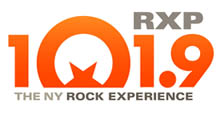 The lone big-market
exceptions were a pair of struggling FMs in New York and Boston
that flipped within days of one another in early February. In
New York, Emmis replaced smooth jazz WQCD with WRXP, an eclectic
rock station that hoped to tap the DNA of the city's progressive
rock stations of the seventies and eighties, especially WPIX
and WNEW. While the station made some interesting moves, including
hiring former MTV "120 Minutes" jock Matt Pinfield
as morning host, it failed to catch fire in a market already
somewhat cluttered with rock stations, and its fate heading into
2008 remained uncertain, especially after early results from
the new Personal Portable Meter ratings technology failed to
show the gains Emmis had hoped for. (The switch to PPM itself
was a major national story, and even a regional one as Hispanic
and urban stations complained to state officials about perceived
ratings bias.) The lone big-market
exceptions were a pair of struggling FMs in New York and Boston
that flipped within days of one another in early February. In
New York, Emmis replaced smooth jazz WQCD with WRXP, an eclectic
rock station that hoped to tap the DNA of the city's progressive
rock stations of the seventies and eighties, especially WPIX
and WNEW. While the station made some interesting moves, including
hiring former MTV "120 Minutes" jock Matt Pinfield
as morning host, it failed to catch fire in a market already
somewhat cluttered with rock stations, and its fate heading into
2008 remained uncertain, especially after early results from
the new Personal Portable Meter ratings technology failed to
show the gains Emmis had hoped for. (The switch to PPM itself
was a major national story, and even a regional one as Hispanic
and urban stations complained to state officials about perceived
ratings bias.)
In Boston, Greater Media made one of the bigger tweaks to
WBOS (92.9) in the nearly two decades since it flipped from country
to rock - but the move from AAA to "classic alternative"
and the elimination of on-air talent didn't have as much of an
effect as hoped.
A few format trends that were big in other parts of the country
were largely absent in the northeast: while an increasing number
of successful AM news and talk stations, such as WTOP in Washington,
KCBS in San Francisco and KIRO in Seattle, moved their audiences
over to the FM dial in 2008, rumors of similar moves for big
NERW-land signals like WINS and KYW never panned out.
What little format innovation there was came from other corners
- in New York, it was noncommercial WFUV that broke new HD ground
by launching a full-time alternative rocker with live jocks on
its HD3 signal; across the border, Astral Media brought the "Virgin
Radio" brand to Canada on Toronto's CKFM, then extended
the brand - but not the Toronto top-40 format - to Ottawa and
Montreal at year's end. And fans of dance music celebrated when
their beloved format landed on New York's "Pulse 87.7,"
which wasn't really a radio station at all, but rather the audio
carrier of a low-power TV signal. That didn't stop it from getting
plenty of attention, though its financial situation appeared
slightly precarious heading into 2009.
7. Satellite Radio's Big Merger? Yawn...
Whatever lobbying firepower Big Radio had left in 2008 was
directed in large part at stopping the proposed merger of the
two big satellite radio operators, DC-based XM and New York-based
Sirius. But for all the NAB's vocal efforts (which often seemed
aimed more towards boosting the flagging HD Radio system than
actually stopping the satellite companies), the economy and the
satellite broadcasters themselves seemed to do a pretty good
job of (nearly) killing the merger on their own.
Though the deal finally went through, the "XM Sirius"
that resulted hardly looked like a mammoth threat to terrestrial
radio. With many of its distinctive voices gone at both the Washington
and New York studios, and beset by a sea of customer complaints
about confusing channel changes and incompatible receivers, the
merged service ended the year offering deep discounts to subscribers
just to keep them in the fold.
Even Howard Stern, despite his wedding in the fall, had a
down year; his massive compensation package was tied to a stock
value that continued to slump, and the spotlight he fed on in
his terrestrial radio days was largely aimed elsewhere, even
as Stern continued to enjoy a devoted (but not growing) fan base
on both the XM and Sirius platforms.
8. FM Translators for AMs - and for HD2s
A trend that began down south, where a handful of small AM
station owners used their pull with local Congressional representatives
to lobby the FCC, reached NERW-land in early 2008, as the first
AM stations in our area won special temporary authority to relay
their signals on existing FM translators.
WTBQ (1110 Warwick NY) was first on the air with a translator,
in February - but it was far from the last. Early players in
the trend included Saga, which put translators on the air for
its AM stations in Keene, N.H., Northampton, Mass., and Ithaca,
N.Y.; Finger Lakes Radio Group, which had most of its AMs in
upstate New York on the FM dial by year's end (including two
daytimers - WCGR 1550 Canandaigua and WFLR 1570 Dundee - that
were promoting themselves primarily as FM signals); and several
smaller stations using FM signals to extend their daytime-only
AMs into the night, such as WCFR 1480 Springfield, Vt. and WCJW
1140 in Warsaw, N.Y.
(Across the border, what few Canadian AMs remained outside
the biggest markets looked to FM as well, as the CRTC continued,
in at least some cases, to allow low-power "nested"
FM signals for AM stations claiming in-city reception problems.)
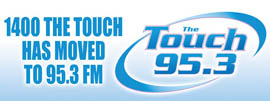 Cumulus put up an
FM translator for its urban AC "Touch" AM in Harrisburg,
WTCY (1400) - then upped the ante dramatically in August when
it flipped the AM to a sports format, leaving "Touch"
on the translator. How did they do it? A clever (and apparently
kosher) interpretation of the FCC rules that appear to allow
an FM translator to relay an HD2 subchannel of an FM signal,
allowing "Touch" to originate as the HD2 of Cumulus'
WNNK (104.1), even though most of its listeners are hearing it
on the translator, W237DE (95.3). A few months later, Saga used
that loophole to launch a new format on one of its Ithaca translators,
creating "Hits 103.3" (WYXL 97.3 HD2 and W276BO 103.3)
to counter an upstart top-40 signal in town. Cumulus put up an
FM translator for its urban AC "Touch" AM in Harrisburg,
WTCY (1400) - then upped the ante dramatically in August when
it flipped the AM to a sports format, leaving "Touch"
on the translator. How did they do it? A clever (and apparently
kosher) interpretation of the FCC rules that appear to allow
an FM translator to relay an HD2 subchannel of an FM signal,
allowing "Touch" to originate as the HD2 of Cumulus'
WNNK (104.1), even though most of its listeners are hearing it
on the translator, W237DE (95.3). A few months later, Saga used
that loophole to launch a new format on one of its Ithaca translators,
creating "Hits 103.3" (WYXL 97.3 HD2 and W276BO 103.3)
to counter an upstart top-40 signal in town.
9. Smooth Jazz Sails Away
There was no format that had a rockier time in 2008 than smooth
jazz. Already long gone from many markets around the region (Boston,
Albany, Pittsburgh), the format suffered two more big blows in
the last 12 months: in February, Emmis pulled it off the air
in New York, replacing WQCD (101.9) with an eclectic rock format
as WRXP. Even the promised "replacement," in the form
of an HD2 subchannel, was slow to arrive - and still lacks a
webstream.
With no outlet in the nation's largest market, Philadelphia
was the next domino to fall: just 22 months after giving the
format - and the WJJZ calls - a high-profile second chance in
the market, Greater Media pulled the plug on its experiment in
September, replacing it with yet another AC in a market that
already had several.
(Other high-profile defections during the year included smooth
jazz stations in Washington, Baltimore, Houston and Miami.)
10. Wease Returns
It's hard to imagine a luckier guy in radio this year than
Rochester's Brother Wease. Had he hit his contract potholes with
former employer Entercom in late 2008, instead of late 2007,
it's unlikely his agent Bob Eatman would have found any broadcaster
with the cash needed to meet his salary demands - and indeed,
the deal Eatman reached with Clear Channel in the spring of 2008
(widely rumored to be a five-year contract at something close
to half a million dollars a year) may someday be viewed as the
high-water mark of medium-market morning star pay, at a time
when so many highly-paid morning jocks found themselves the targets
of corporate cost-cutting.
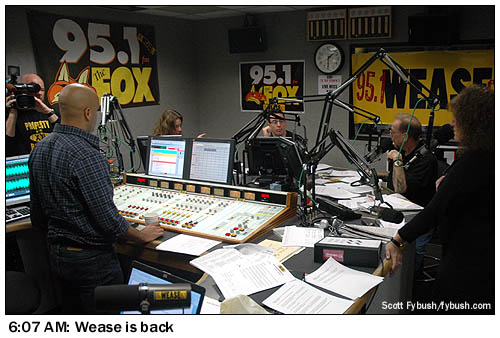
Whatever the actual numbers, Wease brought plenty of attention
to Rochester radio during the year, as he split from Entercom
and his longtime home at WCMF (which recast Wease's former sidekicks
as a new morning show, and then made the smart move of rehiring
laid-off midday guy Dave Kane as PD). Wease then spent much of
the year off the air - but not out of the headlines - hiring
a new set of sidekicks and preparing for his November return,
as he seeks to pull Clear Channel rocker WFXF (95.1) out of relative
obscurity.
Can he do it? We'll check in again when we do our 2009 Year
in Review...

The Year in Station
Sales
JANUARY: Ken Barlow and Bruce Danziger's Vox Communications
picks up Clear Channel's signals in the Burlington, Vermont market
- seven stations for $11 million. That was also the price ZGS
Communications paid for WWSI (Channel 62), the Philadelphia-market
Telemundo affiliate. On the New Hampshire seacoast, EMF Broadcasting
pays Dennis Jackson $1 million for WMEX (106.5 Rochester).
FEBRUARY: EMF adds another northern New England signal,
picking up WCYI (93.9 Lewiston ME) from Citadel-spinoff Last
Bastion Station Trust for $1 million. In suburban Philadelphia,
a group led by the French family of suburban New York's WRNN
buys WTVE (Channel 51) out of bankruptcy for $11.5 million.
MARCH: In one of the year's last big deals, Clear Channel's
TV stations (including the former Ackerley group in upstate New
York and WHP-TV/WLYH in central Pennsylvania) go to the private
Newport group for $1.1 billion.
APRIL: Nassau announces a deal to turn its LMA of WFKB
(107.5 Boyertown PA) into a $2.2 million purchase from WDAC Radio
Co., but fails to close on the purchase. Forever unloads WNTJ
(850 Johnstown PA) - and its enormous nine-tower transmitter
site - to Birach Broadcasting for $300,000. And Bob Bittner adds
a third station, picking up WWBK (900 Brunswick ME) from J.J.
Jeffrey for just $27,000.
MAY: Entercom finally completes its spinoffs from its
acquisition of CBS Radio in Rochester, sending WRMM, WZNE and
WFKL to Oklahoma's Stephens Radio Group for $13.25 million -
barely half what brokers had been asking a year earlier, but
considerably more than similar stations were fetching by year's
end.
 Clear Channel exits
Maine by selling its Bangor and Augusta clusters to Bruce Biette's
new Blueberry Broadcasting group, for $11 million. (Blueberry
then sends two signals, WFZX Searsport and WGUY Dexter, into
trust to avoid ownership-cap issues.) In central Pennsylvania,
Cary Simpson's Allegheny Mountain Network sells its flagship,
WGMR (101.1 Tyrone) to Forever for $2.5 million; Forever stays
under the cap by spinning WSGY (98.7 Pleasant Gap) to 2510 Licenses
for $1.2 million. Clear Channel exits
Maine by selling its Bangor and Augusta clusters to Bruce Biette's
new Blueberry Broadcasting group, for $11 million. (Blueberry
then sends two signals, WFZX Searsport and WGUY Dexter, into
trust to avoid ownership-cap issues.) In central Pennsylvania,
Cary Simpson's Allegheny Mountain Network sells its flagship,
WGMR (101.1 Tyrone) to Forever for $2.5 million; Forever stays
under the cap by spinning WSGY (98.7 Pleasant Gap) to 2510 Licenses
for $1.2 million.
Down the food chain a bit, Gois Communications buys WKND (1480
Windsor CT) out of bankruptcy for $150,000; Shires Media Partnership
picks up WBTN (1370 Bennington VT) for $100,000 from Southern
Vermont College; and Le5 Communications buys French-language
CHYC/CHYK/CHYX in northern Ontario from Haliburton for C$425,000.
JUNE: Access.1 Broadcasting unloads most of its Atlantic
City cluster (save for WMGM-TV and one small AM signal) to Atlantic
Broadcasting for $9.5 million. New WBLH (92.5 Black River NY)
goes from RadioActive LLC to Intrepid Broadcasting for $210,000,
while the CP for WRMR (89.3 Lindenhurst) on Long Island goes
from JCM Radio of New York to Calvary Chapel of Hope for $57,000.

JULY: Eric Straus exits radio, selling his Regional
Radio Group stations in Glens Falls (WWSC/WCQL/WCKM) to Clay
Ashworth's Northway Broadcasting for $2.75 million. Millennium
Broadcasting sells WBUD (1260 Trenton) to Domestic Church Media
Foundation for $2.3 million. In northern Pennsylvania, Intrepid
sells WDDH (97.5 St. Mary's) to Laurel Media for $1.23 million.
And up north, Rogers and Newcap swap AMs in Halifax (CFDR 780,
to Rogers) and Sudbury (CIGM 790, plus C$5 million, to Newcap),
allowing each company to flip those AMs to FM.
AUGUST: Newcap adds to its holdings in northern Ontario,
buying 12 stations in North Bay, Timmins and the Muskoka region
from Haliburton for C$18.5 million. On the New York/Pennsylvania
line, Cary Simpson's selloff continues with the $290,000 sale
of WQRM (106.3 Smethport) to Colonial Broadcasting.
SEPTEMBER: Bob Stevens' Broadcast Communications sells
silent WROG (relocated from 102.9 Cumberland MD to 93.3 Chambersburg
PA) to Harrisburg public broadcaster WITF for $875,000.
OCTOBER: Vox sends its Randolph VT stations, WCVR/WTSJ,
to Great Eastern for $700,000. Over in the Watertown, NY market,
Community Broadcasting adds to its cluster, buying the CP for
WEFX (94.1 Calcium NY) from Live Air for $200,000.
NOVEMBER: More Cary Simpson sales, as Backyard Broadcasting
adds WFRM-FM (96.7 Coudersport PA, with a CP to move to Portville
NY) to its Olean cluster for $325,000. South of Boston, Kingdom
Church buys WMSX (1410 Brockton) from Hispanic Broadcasting Asset
Trust, which had rescued the station from bankruptcy earlier
in the year, for $540,000. On the TV dial, Twin Valleys Television
buys dark WCWF (Channel 40) in Saranac Lake, NY for $1,000,001
from Channel 61 Associates LLC.
DECEMBER: One more seven-figure deal closes out the
year, as the Morey group files to sell WBON (98.5 Westhampton
NY) to JVC Broadcasting, a new partnership of station operator
John Caracciolo and programmer Vic "Latino" Canales,
for $1.75 million.
North of Boston, radio veterans Carl Strube and Pete Falconi
join forces as Port Communications to buy WNBP (1450 Newburyport)
from Westport Communications. Cary Simpson sells WFRM (600 Coudersport
PA) to L-Com for $200,000, while down US 6 a bit, Frank Iorio
sells WNAE-FM (102.7 Clarendon PA) to Vernal Enterprises for
$355,000. On the other end of the Keystone State, WS2K Radio
files to sell WCOJ (1420 Coatestown) to its LMA operator, Holy
Spirit Radio Foundation, for $800,000.
Across the border, Rogers buys out John Wright to take full
control of CIKR and CKXC in Kingston, Ontario.

The Year in Programming,
People and Calls
JANUARY: ESPN Radio's WEPN (1050 New York) LMAs (with
an option to buy) Nassau's 1040 in Flemington, NJ, flipping it
from WCHR to WNJE - and sending the WCHR religious format and
calls down to 920 in Trenton, ex-WPHY, with ESPN.
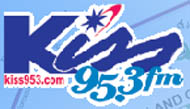 Later in the month,
WEPN also adds Morey's WLIR (107.1 Hampton Bays) on Long Island's
east end to the simulcast. On the Maine/New Hampshire seacoast,
Clear Channel flips country "B95" WUBB to "Kiss"
WSKX, simulcasting Boston's WXKS-FM. Down the dial in Boston,
Salem's WTTT (1150) dumps conservative talk for Spanish religious
"Radio Luz." Later in the month,
WEPN also adds Morey's WLIR (107.1 Hampton Bays) on Long Island's
east end to the simulcast. On the Maine/New Hampshire seacoast,
Clear Channel flips country "B95" WUBB to "Kiss"
WSKX, simulcasting Boston's WXKS-FM. Down the dial in Boston,
Salem's WTTT (1150) dumps conservative talk for Spanish religious
"Radio Luz."
Call changes: WTYX (1490 Watkins Glen NY) becomes WRCE.
Gone for good: CFFX 960 Kingston ON, on January 15th; CFBN
1280 Toronto; CHLN 550 Trois-Rivieres QC
FEBRUARY: The month's biggest news comes on the New
York FM dial, where Emmis pulls the plug on smooth jazz WQCD
(101.9) Feb. 5, replacing it with rocker WRXP. Less than a week
later, Mega Communications brings dance music to the bottom of
the FM dial, using the audio carrier of WNYZ-LP (Channel 6) as
"Pulse 87.7." Just up the dial, long-neglected WNYE
(91.5) signs a deal to bring some of the adventurous music programming
of Seattle's KEXP to the New York radio dial.
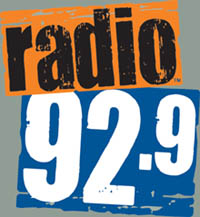 In Boston, the month
starts with a format change at WBOS (92.9), which drops its DJs
and its AAA format and goes to "classic alternative." In Boston, the month
starts with a format change at WBOS (92.9), which drops its DJs
and its AAA format and goes to "classic alternative."
Outside the big cities, a format change in Rutland, Vermont
kills off AAA WEBK (105.3 Killington), with "Cat Country"
WJEN moving up the dial on Feb. 8 and classic rock "Drive"
WDVT replacing it on 94.5 on Feb. 22. In north central Pennsylvania,
WZYY (106.9 Renovo) flips to a simulcast of country WJOW (105.9
Phillipsburg), and in Rochester, Feb.11 brings a move of "Legends"
WLGZ from AM 990 to FM 102.7 (formerly religious WRCI).
The AM-on-FM translator push arrives in the northeast at WTBQ
(1110 Warwick NY), which signs on an FM simulcast at 99.1.
And the first of the year's big waves of job cuts hits Citadel
stations on Feb. 29.
Call changes: WTMM (1300 Rensselaer) becomes WGDJ, while new
stations WDNJ 88.1 Hopatcong NJ, WBLH 92.5 Black River NY, WDYC
107.1 Saranac Lake NY and WFTE 90.3 Mount Cobb PA all get calls.
Gone: WIPS 1250 Ticonderoga NY, silenced by poor economic
conditions Feb. 29.
MARCH: Providence's sports radio "Score"
(WSKO) is silenced March 10, replaced by "True Oldies"
WPRV on AM 790 and by a simulcast of talker WPRO (630), under
the heritage WEAN calls, on FM 99.7. Down I-95 a few exits, Citadel
swaps the frequencies of news-talk WXLM (from 102.3 to 104.7)
and rocker WMOS (from 104.7 to 102.3) a week later. Meanwhile,
the station that drove WSKO out of sports - Boston's WEEI - relaunches
its plans for a regional network across New England. A new sports
talker comes to Trenton at month's end, as WBUD (1260) drops
its oldies format for a brief run with Fox Sports Radio.
 In Canada, Chatham's
CFCO flips from oldies to country, while "KICX Country"
in Orillia moves from CICZ 104.1 to CICX 105.9, all on March
3, with 104.1 flipping to classic rock as "the Dock."
In Kingston, US-based rimshotter WBDR (102.7 Cape Vincent NY)
drops "Border" top 40 for standards as "The Lake,"
WLYK, with the WBDR calls moving to 106.7 Copenhagen-Watertown
NY, ex-WBDI, which stays with the "Border" format. In Canada, Chatham's
CFCO flips from oldies to country, while "KICX Country"
in Orillia moves from CICZ 104.1 to CICX 105.9, all on March
3, with 104.1 flipping to classic rock as "the Dock."
In Kingston, US-based rimshotter WBDR (102.7 Cape Vincent NY)
drops "Border" top 40 for standards as "The Lake,"
WLYK, with the WBDR calls moving to 106.7 Copenhagen-Watertown
NY, ex-WBDI, which stays with the "Border" format.
Buffalo gets a new talker, as Dick Greene flips WECK (1230)
from classic country on March 3. So does Worcester, as WNEB (1230)
drops religion for conservative talk as "The Patriot."
Highly-visible Boston pirate "Touch FM" is hit with
a $17,000 forfeiture order; at year's end, the fine remains unpaid,
and the station remains very much on the air.
On TV, Burlington's WFFF (Fox 44) adds a 7 PM newscast on
sister station WVNY (ABC 22).
New to the air: CJSP (92.7 Leamington ON), with country on
March 3; community station CIWS (102.7 Whitchurch-Stouffville
ON), as "Whistle Radio" March 17; "Fox 6 Springfield,"
a subchannel of WGGB-DT, on March 31.
Call letters: Unbuilt WMJQ (1330 Ontario NY) becomes WYNY;
new calls include WWES (89.9 Mount Kisco NY, part of the WAMC
network) and WHHN (88.1 Hollidaysburg PA).
APRIL: The cuts continue, on and off the air, with
some of the most visible coming at Boston's WBZ-TV, where CBS
jettisons longtime staffers Bob Lobel, Joyce Kulhawik and Scott
Wahle. Across town at WHDH-TV, general manager Randi Goldklank
gets into a bizarre (and apparently alcohol/depression-induced)
altercation with Logan Airport security, which eventually costs
her her job.
 On the radio, Greater
Media relaunches sports WPEN as "ESPN 950" on April
1, with little effect on its lackluster ratings. In Johnstown
PA, news-talk WNTJ moves from 850 (which becomes WKGE, simulcasting
the "Edge" talk of WWGE 1400 Loretto) to 1490, formerly
WPRR. Syracuse's WSEN (92.1/1050) drops 60s oldies for 70s/80s
classic hits, sending the 60s tunes to former talker WFBL (1390).
And in Laconia, N.H., WEZS (1350) sheds smooth jazz for oldies. On the radio, Greater
Media relaunches sports WPEN as "ESPN 950" on April
1, with little effect on its lackluster ratings. In Johnstown
PA, news-talk WNTJ moves from 850 (which becomes WKGE, simulcasting
the "Edge" talk of WWGE 1400 Loretto) to 1490, formerly
WPRR. Syracuse's WSEN (92.1/1050) drops 60s oldies for 70s/80s
classic hits, sending the 60s tunes to former talker WFBL (1390).
And in Laconia, N.H., WEZS (1350) sheds smooth jazz for oldies.
Two silent stations return to the air: WVRR (101.7 Newport
NH) moves south to Keene, returning as rocker WKKN (101.9 Westminster
VT); WGLD (1440 Red Lion PA) moves to the York market, returning
with a loop of Phillies highlights (yes, it was their year
in 2008!) ahead of a relaunch with ESPN sports.
New to the air: WTBD (97.5 Delhi NY), with adult hits; WHDD-FM
(91.9 Sharon NY), the first of a flood of new noncommercial signals.
Call changes: WJAE (1440 Westbrook ME) to WJJB, ahead of some
big changes later in the year at that cluster.
Gone for good: CBA (1070 Moncton NB), which ends 70 years
of service to the Maritimes - and beyond - at 8:30 AM on April
7, having moved to FM 106.1.
New to the air: CKHK (107.7 the Jewel) in Hawkesbury ON, at
9 AM April 14.
MAY: The on-air revolving door keeps spinning, ousting
Kidd Chris from mornings at Philly's WYSP, after some questionable
comments earlier in the year, and his competitor Booker from
WIOQ (Q102). On-air tastelessness also ends Mark Madden's career
at Pittsburgh's WEAE (1250), though he'd return later in the
year at Clear Channel's WXDX (105.9).
In New York, John R. Gambling returns to the morning airwaves
at the station his family made famous, WOR (710), while across
town Clear Channel finishes moving all five of its FMs into its
new studios at 32 Avenue of the Americas. Upstate, budget cutbacks
at Stephens Media oust morning veteran Dee Alexander and newsman
Bob Kirk.
In New England, the "River" AAA format at WXRV (92.5
Andover MA) gets a new simulcast, WXRG (99.9 Athol); 99.9's former
WNYN calls land up in northern New Hampshire at the former WXRG
99.1 Whitefield. Down the Connecticut River a bit, WMXR (93.9
Woodstock VT) drops "Pulse" talk for "Maxx"
classic hits, sending the talk to WTSL (1400 Lebanon NH).
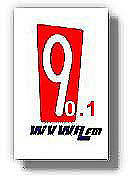 New call letters:
WIOX (91.3 Roxbury NY), and ("Nine! Lives!") WVWA (90.1
North Salem NY). New call letters:
WIOX (91.3 Roxbury NY), and ("Nine! Lives!") WVWA (90.1
North Salem NY).
Back on the air: little WPEB (88.1 Philadelphia), under new
owners.
Gone for good: CKPT (1420 Peterborough ON), on May 5; CJCH
(920 Halifax NS), on May 30, both moved to FM.
New to the air: WOTX (93.7 Lunenburg NH), with classic rock;
CHRK (The Giant 101.9) Sydney NS, at 8 AM May 27; CJCH-FM (101.3
the Bounce), replacing the former AM with a top 40 format at
10 AM May 30.
New to the world: Eli Benjamin Fybush, at 5:32 AM May 13.

JUNE: Corus pulls the plug on news and talk at "AM
940 Montreal," flipping CINW to oldies on June 14.
EMF brings its satellite formats to northern New England,
taking over the former WMEX (106.5 Farmington NH) at 10 AM on
June 2, flipping it to "Air 1" Christian rock, first
as WKHL, then as WNHI. In central New York, EMF leases Utica-market
"K-Love" outlet WOKR (93.5 Remsen) to the "God's
Country" southern gospel network. Down the road in Rochester,
Crawford flips WLGZ(AM) 990 back to religion as WRCI.
On the Jersey shore, WZBZ (99.3 Pleasantville)/WSNQ (105.5
Cape May Court House) flip from "Buzz" rhythmic top
40 to "Kiss" mainstream top 40.
New call letters: WXLB (91.7 Boonville NY); WXLE (89.7 Canton
NY); WSLG (90.5 Gouverneur NY), all on the North Country Public
Radio network; WMEX (88.1 Edgartown MA); WUMM (91.7 Machias ME).
Gone for good: WISL (1480 Shamokin PA), deleted after a long
silence.
New to the air: CIJK (89.3 K-Rock) Kentville NS, at 8:09:30
AM June 12; WELX (107.1 Dannemora NY), simulcasting WCLX 102.9
Westport; WZZH (90.9 Honesdale PA), on the "Word FM"
network.
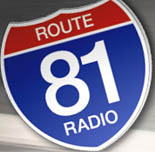 JULY: In another
sign of the challenging economic climate, Route 81 Radio collapses,
with its backers, WallerSutton, reclaiming the stations in Pennsylvania
and upstate New York under the WS2K banner. JULY: In another
sign of the challenging economic climate, Route 81 Radio collapses,
with its backers, WallerSutton, reclaiming the stations in Pennsylvania
and upstate New York under the WS2K banner.
Vermont's "Corm and the Coach" sign off after a
quarter-century, while in Dover, N.H., Paul LeBlanc retires from
WTSN (1270) on July 11, after an amazing 44 year run.
In New York, WQHT (Hot 97) pulls the plug on morning host
Miss Jones, whose show continues, briefly, from a new home base
in Philadelphia at Radio One's WPHI. Across the river in New
Jersey, most local jocks disappear from WCTC (1450 New Brunswick)
and WMTR (1250 Morristown), replaced by satellite-delivered "True
Oldies," which also finds a home in northwestern New Jersey
at WTOC (1360 Sussex), ex-WNNJ.
Oldies return to Scranton, too, at WQFM/WQFN, where "Cool
FM" replaces AC "Q FM." Over in the hills east
of Altoona, WFZY (106.3 Mount Union) switches simulcasts, becoming
WBSS, a relay of classic hits WBUS (93.7 Boalsburg), while sister
station WHUN (1150 Huntingdon) begins simulcasting WRSC (1390
State College) instead of WFBG (1290 Altoona).
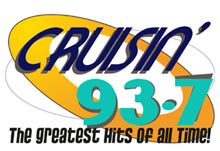 In
New England, WUSX (93.7 Addison VT) flips from country to oldies
as "Cruisin' 93.7"; in September, competitor Vox would
return the favor by flipping talker WXZO (96.7 Willsboro NY)
to oldies as "96.7/DOT-FM," while relaunching former
oldies station WVTK (92.1 Port Henry NY) with AC for Addison
County, Vermont. Over in New Hampshire, WTSL (1400 Lebanon NH)
requested - but never used - the calls WEEY, holding them in
reserve for later developments down the river. In
New England, WUSX (93.7 Addison VT) flips from country to oldies
as "Cruisin' 93.7"; in September, competitor Vox would
return the favor by flipping talker WXZO (96.7 Willsboro NY)
to oldies as "96.7/DOT-FM," while relaunching former
oldies station WVTK (92.1 Port Henry NY) with AC for Addison
County, Vermont. Over in New Hampshire, WTSL (1400 Lebanon NH)
requested - but never used - the calls WEEY, holding them in
reserve for later developments down the river.
Opie & Anthony begin vanishing from terrestrial radio,
as Citadel replaces them with music at WAQX in Syracuse. (A month
later, they'd be gone from sister station WEDG in Buffalo as
well.)
Call changes: Toronto's CHWO (740) becomes CFZM, "Zoomer
Radio" (and the initials, reversed, of new owner Moses Znaimer);
WWDJ (970 Hackensack NJ) becomes WTTT, while Boston's WTTT (1150)
becomes WWDJ. New calls: WRKJ 88.5 Westbrook ME, WSLZ 88.1 Cape
Vincent NY, WXLQ 90.5 Vergennes VT.
New to the air: WNJY (89.3 Netcong NJ), part of the NJN network,
July 8; CHOK-FM1 (103.9 Sarnia ON), simulcasting CHOK 1070, at
7:10 AM July 23.
AUGUST: A long on-air partnership ends at New York's
WFAN, as Chris "Mad Dog" Russo splits from Mike Francesa
for the last time; Francesa would end up doing afternoons solo,
while Russo would move to satellite radio later in the year.
No worries about non-competes, either: New York State outlawed
those on August 7.
 Salem brings
its conservative talk format to the Big Apple August 6 on "The
Apple," WNYM (970 Hackensack NJ), replacing the short-lived
WTTT calls there. Salem brings
its conservative talk format to the Big Apple August 6 on "The
Apple," WNYM (970 Hackensack NJ), replacing the short-lived
WTTT calls there.
In Toronto, Astral Media pulls a surprise move on the afternoon
of August 25, replacing sleepy "Mix 99.9" (CKFM) with
high-energy "Virgin Radio 999." At year's end, Astral
would unveil plans to expand the Virgin brand to Ottawa, Montreal
and Vancouver as well.
WPRO's John DePetro makes headlines in Rhode Island after
the Citadel talker's ratings were found to be inflated by phony
diaries from his own home; in a typically classy move, the "Independent
Man" pins the blame on the Mrs., and somehow keeps his job.
In New Hampshire, Nassau has to hastily unwind its deal to
program and sell time for WWHK (102.3 Concord) because of ownership-cap
issues; the station would run automated for a few weeks before
going silent while seeking a buyer.
In Harrisburg, "Touch" WTCY (1400) gives way to
ESPN Radio and original calls WHGB, with the "Touch"
urban AC format now planted on the FM dial via translator W237DE
(95.3) and WNNK-FM's HD2 channel.
In Pittsburgh, Renda ends the month by ditching talker WPTT
(1360 McKeesport) in favor of business talk under new calls WMNY.
Up I-79 in Oil City, WKQW (1120) drops "Wildcatter Country"
for oldies as "11Q"; oldies also land on the FM dial
in Canandaigua, NY on W283BF (104.5) and its parent station,
daytimer WCGR (1550).
Call changes: WSJQ (106.7 North Cape May NJ) to WKOE, ahead
of a format flip Sept. 19 to "Coast Country"; WTSM
(93.5 Springfield VT, moving to Swanzey NH in the Keene market)
to WEEY, ahead of its return to the air as a WEEI sports relay;
WCYI (93.9 Lewiston ME) to WARX, joining EMF's "Air 1"
network; silent WRTN (1490 Berlin NH) to WKDR; new WNJO (90.3
Toms River), signing on for the first time Aug. 23.
New to the air: WBLH (92.5 Black River), signing on Aug. 1
after some stunting as variety hits "Your Tunes 92.5";
CICS (91.7 Sudbury ON), as "KICX Country," Aug. 18;
WUFR (91.1 Bedford PA), with Family Radio, Aug. 16; WBCQ-FM (94.7
Monticello ME).
Gone for good: Analog TV begins its long sunset, with transmitter
failures dooming WTVE (Channel 51) in Reading PA and, around
Aug. 23, WPXT (Channel 51) in Portland.
SEPTEMBER: So much for smooth jazz in Philadelphia
- after reviving the format and the WJJZ calls, Greater Media
pulls the plug Sept. 5, stunting for the weekend before launching
AC "Now 97.5" Sept. 8 (and soon changing the calls
to WNUW.)
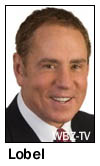 "Uncle
Dale" Dorman leaves the morning shift at Boston's WODS (103.3)
Sept. 12, claiming it was his own decision to move to weekends
even as the station aims younger by bringing in Chris Zito to
work alongside Karen Blake - and as other WODS veterans are ousted
along the way. (Bizarrely, WODS experiments with former WBZ-TV
sportscaster Bob Lobel as its morning man for several months
before Zito's arrival, but Lobel never gels, and health problems
keep him off the air for a few weeks in the middle of his run.) "Uncle
Dale" Dorman leaves the morning shift at Boston's WODS (103.3)
Sept. 12, claiming it was his own decision to move to weekends
even as the station aims younger by bringing in Chris Zito to
work alongside Karen Blake - and as other WODS veterans are ousted
along the way. (Bizarrely, WODS experiments with former WBZ-TV
sportscaster Bob Lobel as its morning man for several months
before Zito's arrival, but Lobel never gels, and health problems
keep him off the air for a few weeks in the middle of his run.)
North of Boston, WESX (1230) says farewell to its Marblehead
transmitter site and Salem city of license after 70 years, changing
COL to Nahant and transmitter location to Saugus; in Keene, N.H.,
standards on "Unrock" WZBK (1220) give way to a simulcast
of progressive talk WKVT (1490) from Brattleboro, Vermont. (Meanwhile
on the Jersey shore, progressive talk WTAA 1490 Pleasantville
gives way to regional Mexican as "La Gran D.")
In Hanover, N.H., Dartmouth College takes WDCR (1340) silent
after damage to its transmitter site; the students who had been
operating the station say it's now a "web-only" outlet,
and the college is apparently looking to sell the AM license.
Up in Maine, sports listeners have to reset their dials as
J.J. Jeffrey's Atlantic Coast group sign on with the Boston-based
WEEI network. The WEEI shows take over on the former WJJB-FM
(95.5 Topsham, later WUEI and then WGEI) and WRED-FM (95.9 Saco,
becoming WPEI), while his local "WJAB" sports programming
stays on AM 1440 (which went from WJAE to WJJB to WRED during
the year) and moves from 95.5 to the higher powered 96.3, ex-WLOB-FM,
now WJJB-FM. The WLOB talk stays on the air at 1310 in Portland,
where those calls have been for over half a century. In Bangor,
WEEI sports replaces talk at WABI (910) and top-40 at WWBX (97.1),
renamed WAEI.
In Trenton, Catholic programming under the WFJS calls (for
Bishop Fulton J. Sheen) replaces Fox sports WBUD (1260) on Sept.
15; the WBUD calls are parked on the former WADB 1310 Asbury
Park. There's a religious format change in Rochester, too, as
Crawford's Christian contemporary WRCI (990) gives way to a semi-simulcast
of the religious talk at WDCX-FM (99.5 Buffalo), under new calls
WDCX(AM). At the exact same moment, Entercom flips WROC (950
Rochester) from progressive talk to ESPN sports.
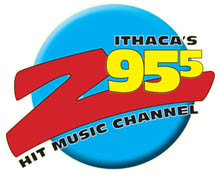 Top 40 comes
to Ithaca, as Finger Lakes Radio Group moves WFLR-FM (95.9 Dundee)
to Odessa as WFIZ (95.5), relaunching on Sept. 18 at 5 PM as
"Z-95.5." The new signal would quickly get competition,
with Saga flipping translator W276AO (103.3 Ithaca) to an HD2
simulcast as "Hits 103.3," and it suffers tragedy,
as PD/morning man Tommy Frank dies just a day after his debut
broadcast in October. (WFLR-FM's old country format, meanwhile,
lives on at WFLR 1570, formerly news-talk, and its new FM translator
at 96.9.) Top 40 comes
to Ithaca, as Finger Lakes Radio Group moves WFLR-FM (95.9 Dundee)
to Odessa as WFIZ (95.5), relaunching on Sept. 18 at 5 PM as
"Z-95.5." The new signal would quickly get competition,
with Saga flipping translator W276AO (103.3 Ithaca) to an HD2
simulcast as "Hits 103.3," and it suffers tragedy,
as PD/morning man Tommy Frank dies just a day after his debut
broadcast in October. (WFLR-FM's old country format, meanwhile,
lives on at WFLR 1570, formerly news-talk, and its new FM translator
at 96.9.)
In Hamilton, Ontario, country on the AM dial yields to more
talk Sept. 2, as CHAM (820) flips to "Talk 820" at
- when else? - 8:20 AM.
Call changes: WCXH (780 Monticello ME) to WXME, now silent;
unbuilt WVWA (90.1 North Salem NY) to WJJZ. New calls: WRFI 91.9
Watkins Glen NY, WZCC (soon changed to WMJQ) 1400 Middletown
NY.
New to the air: WJPK (100.3 Barton VT), simulcasting WKXH
(105.5 St. Johnsbury).
Gone for good: More analog TV stations - WSAH (Channel 43)
Bridgeport, Connecticut; WQLN (Channel 54) Erie, PA, on Sept.
15; WPME (Channel 35) Lewiston, Maine, on Sept. 17.
OCTOBER: The radio talent drain continues, as budget
problems at WNYZ-LP (Pulse 87.7) send morning men Star &
Buc Wild packing, while the lure of a new gig at Talk Radio Network
draws veteran WABC programmer Phil Boyce out of the Citadel station.
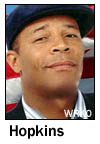 Entercom
makes cuts across its stations mid-month, including a switch
to syndication for late mornings at WRKO (680 Boston). That sends
one of the station's few up-and-coming talents, Reese Hopkins,
packing - just a week, as it turns out, before he's arrested
on charges that he raped an underage girl. Across town at WTKK
(96.9), New York's Curtis Sliwa signs on for an evening shift
that will end up becoming a new syndicated show before the year
is out. Entercom
makes cuts across its stations mid-month, including a switch
to syndication for late mornings at WRKO (680 Boston). That sends
one of the station's few up-and-coming talents, Reese Hopkins,
packing - just a week, as it turns out, before he's arrested
on charges that he raped an underage girl. Across town at WTKK
(96.9), New York's Curtis Sliwa signs on for an evening shift
that will end up becoming a new syndicated show before the year
is out.
High on the hill above Williamsport, Pennsylvania, vandals
riding a skid loader plow into the WILQ (105.1) transmitter building,
causing plenty of damage.
In Maine, Nassau rearranges some of its FM signals, moving
classical "W-Bach" from WBQQ (99.3 Kennebunk) and WBQW
(106.3 Scarborough) to the former WHXQ (104.7 Kennebunkport).
The latter two stations swap calls, with 106.3 becoming WHXQ
and simulcasting "Bone" rock with WHXR (106.7 North
Windham); WBQQ becomes a seacoast relay of country "Wolf"
WTHT (99.9 Auburn).
In Randolph, Vermont, WCVR (102.1) drops its simulcast of
Burlington's "Champ" (WCPV), sticking with classic
rock as "V102, World Class Vermont Rock."
More signs of a shaky economy: after falling silent on Sept.
30, WCOJ (1420 Coatestown PA) relaunches Oct. 3 with noncommercial
Catholic radio, as a sale is pending from WallerSutton to Holy
Spirit Radio Foundation. On the TV side, the constant search
for new revenue streams prompts LIN to seek more compensation
from cable operators who carry its local stations; the contract
dispute takes Buffalo's WIVB and WNLO and Springfield's WWLP
off Time Warner systems for several weeks before both sides come
to terms. (Some in the industry blame LIN's subsequent staffing
cuts on the loss of ratings and ad revenues during the dispute;
LIN denies there's any connection.)
In Philadelphia, no Phillies fan had more reason to celebrate
the team's World Series championship than radio play-by-play
voice Harry Kalas; he didn't get to call the Phils' 1980 win,
thanks to the network radio rules then in effect, so after 37
years with the team, their triumph over the Tampa Parking Garage
Rays (you call that thing a "field"?) was his first
championship call. Across the state, Lanny Frattare never got
to call a Series win in 33 seasons with the Pirates, either,
though he was on hand while network announcers called their 1979
championship; he announced his retirement on October 1, as that
team's 16th consecutive losing season drew to a close.
New call letters: WXRN 91.5 Warren CT, WANH 91.5 Laconia NH,
WZXE 88.3 East Nottingham PA; WPLY (96.3 Walpole NH) becomes
WFYX.
New to the air: religious signals WCIM 91.5 Shenandoah PA
(Family Life Network), WHHN 88.1 Hollidaysburg PA (Radio Maria),
WKEL 98.5 Confluence PA (K-Love); VPR classical outlet WVTI 106.9
Brighton VT; community Francophone station CFBO 90.7 Dieppe NB;
college station CJLO 1690 Montreal, at 1 PM Oct. 15.
NOVEMBER: All the Christmas music in the world - and
there's plenty of it across the NERW-land dial - can't mask the
gloom of accelerating layoffs at stations big and small. Cumulus,
Citadel, CBS, Clear Channel, Entercom, Buckley and even the New
York Times' WQXR cut staff in the weeks around Thanksgiving.
The inescapable Danny Bonaduce remains employed, somehow, moving
east from CBS' KLSX (97.1 Los Angeles) to take morning drive
at WYSP in Philadelphia. (Another LA import, the even more inescapable
Ryan Seacrest, continues his long march across the midday radio
dial, occupying that slot on most of the major top-40 signals
in the northeast by year's end.)
In Toronto, CHUM prepares to say goodbye to its venerable
studio home at 1331 Yonge Street with an open house Nov. 15 that
draws hundreds of fans to wait in the rain for a chance to tour
the building and see the CHUM collection of memorabilia.
In Hartford, there's bad news for CBS, as the FCC rules that
WTIC (1080) is not entitled to skywave protection for its non-directional
signal during the hour or so between sunset in Connecticut and
sunset at co-channel KRLD in Dallas.
Up in Lake Placid, one of the month's few non-Christmas format
changes finds WIRD (920 Lake Placid) dropping ESPN to simulcast
WNBZ (1240 Saranac Lake); a few weeks later, sister station WRGR
Tupper Lake moves from 102.3 to 102.1.
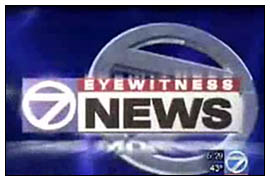 On
TV, the "Eyewitness News" brand and "Cool Hand
Luke" music return to struggling WKBW-TV (Channel 7) in
Buffalo as part of the station's 50th anniversary celebration. On
TV, the "Eyewitness News" brand and "Cool Hand
Luke" music return to struggling WKBW-TV (Channel 7) in
Buffalo as part of the station's 50th anniversary celebration.
New call letters: KCBE - yes, KCBE - 90.7 Napeague
NY, WEER 90.7 East Hampton NY (they'll share time on the frequency),
WRWV 91.1 St. Mary's PA. WQRM (106.3 Smethport PA) becomes WXMT.
Gone for good: One more analog signal - WGBY (Channel 57)
in Springfield, MA, on Nov. 5.
DECEMBER: A gloomy year slouches to its end with more
job cuts, including the ouster of Greater Media Boston market
manager Phil Redo and WBMX (98.5) morning man John Lander.
CBS pulls Opie & Anthony off WBCN (104.1) in Boston, leaving
WXRK (92.3 New York) as the duo's last terrestrial outlet - but
"K-Rock" ends the year with serious doubts about its
future as much of the rest of the station's staff is cut; one
of the few who remains, afternoon jock Ian Camfield, returns
voluntarily to his native England to work at XFM in London.
Maine Public Broadcasting Network announces it will try to
keep its programming going, despite sagging underwriting and
state aid, by shuttering one TV and two FM transmitters for the
first six months of 2009 - though state officials quickly say
they'll try to find a way to squeeze out the funds needed to
keep those signals on the air in remote parts of the state.
TV stations aren't spared the ax: at one medium-market station
alone, Hubbard's WNYT in Albany, more than a dozen staffers are
out of work; all over the region, veterans with high salaries
and long tenures look to early retirement, while those who don't
take the opportunity, like NECN's weekend anchor Tom Ellis, find
themselves out of work.
The economy isn't the only source of trouble for broadcasters
- in New England, an ice storm mid-month knocks out power to
a million customers from Albany to Maine, wreaking the worst
of its damage on a line from Worcester north to the Upper Valley
and silencing some stations for several weeks.
 Good
news amidst the wreckage? Just a bit - in New York, noncommercial
WFUV (90.7) launches a new HD3 subchannel, "The Alternate
Side," complete with live jocks and student involvement. Good
news amidst the wreckage? Just a bit - in New York, noncommercial
WFUV (90.7) launches a new HD3 subchannel, "The Alternate
Side," complete with live jocks and student involvement.
And as the Christmas music recedes, a few format changes emerge:
on Cape Cod, top 40 gives way to "Cape Country" at
WKPE (103.9 South Yarmouth), while on the Maine coast, WQSS (102.5
Camden) flips from classic hits "Peak" to AC as "Midcoast
102," amidst rumors of more format changes at Blueberry's
mid-Maine FM cluster. In Vermont, WLFE (102.3 St. Albans) emerges
from Christmas stunting to trade its country format for rock
as "Pure Rock 102." And in the Altoona market, WALY
(103.9 Bellwood) has quietly shifted from oldies to mainstream
AC.
New call letters: WJCI 89.5 Baptist Village MA, WEVP 91.7
Laporte PA, WYPM 93.3 Chambersburg PA (ex-WROG 102.9 Cumberland
MD).
New to the air: WRUN-FM 90.3 Remsen NY, part of the WAMC network
out of Albany; CKKW-FM 99.5 Waterloo ON, testing; CINA 1650 Mississauga
ON, testing.
Gone for good: more analog TV signals, including WZMY (Channel
50) in Derry NH and WGGB (Channel 40) in Springfield, on Dec.
1; WSWB (Channel 38) in Scranton, on Dec. 8; WLWC (Channel 28)
New Bedford-Providence, Dec. 9 - and possibly WFXT (Channel 25)
in Boston, though it hasn't formally filed to go dark on analog.
Gone temporarily is WWDP-DT in Norwell, which vacated channel
52 Dec. 2 so a new channel 10 antenna could be installed on its
tower, to be activated when the channel comes open in February.

Year-End Rant
It's coming up on a decade now since the first of these Year-End
Rants appeared in NERW's Year in Review, and in re-reading that
very
first one (attached to the 1999 edition), it's sobering to
see how much hasn't changed in all that time.
Nine years ago, our complaints had a very familiar ring -
too much out-of-market, generic-sounding voicetracking, too little
local news, the perceived threats of satellite radio and web
streaming (no mention, back then, of the iPod, still two years
in the future), and ballooning station prices that made station
ownership a game for corporate speculators instead of hometown
entrepreneurs.
Back then, we bemoaned the loss of the sense of magic that
radio was once so good at creating - and of course the years
that followed, especially these last few, haven't brought much
magic back.
It's easy to be bitter, whether you're one of the huge number
of talented people that the industry - not just radio, but TV
as well - has chewed up and spit out in the drive for ever-greater
profit margins, repayment of unsustainable debt loads, and better
returns on investments that were ill-conceived (did we mention
that Citadel actually spent $2.7 billion on ABC Radio?), or whether
you're one of those still in the trenches, but wondering - as
everyone in the business surely now does - whether the next swing
of the ax will have your neck as a target, and how you'll keep
doing the work that three people used to do in the meantime.
So what kind of right do we have to show up here at the end
of a miserable year and suggest that there's at least a possibility
that things might take a turn for the better in 2009?
The key, just possibly, may lie in the one complaint from
1999 that was wiped out by the economic meltdown of 2008: those
unsustainable station values.
The run-up started around the same time this column did, as
FCC ownership deregulation in the mid-nineties began allowing
owners to go from one AM and one FM in any given market to as
many as eight, with no national cap on ownership. It was good
news, at least for a while, for the mom-and-pop owners who'd
worked for years to assemble small station groups - many of them
cashed out at significant profits, and it's hard to begrudge
them a decent windfall after decades of service to the industry.
But then the balloon kept inflating, as balloons do, and what
began as big corporations buying signals from small owners turned
into big corporations buying signals from other big corporations,
sometimes hundreds of them at a time. Odds are, if you're a regular
NERW reader, you lived through the results, and they weren't
pretty.
Ask any station broker, and they'll tell you that the balloon
popped, and hard, during 2008. (For that matter, just compare
our list of station sales above to the previous editions of Year
in Review, helpfully linked up at the top of that gray bar on
the left.)
The collapse in station values didn't happen in a vacuum -
it came just before an election that promises to bring about
some big changes on the Washington regulatory scene. After two
decades in which Democrats and Republicans alike carried the
banner of deregulation, there's reason to believe that the Obama
FCC may take a different view on matters such as ownership caps
and local programming requirements. While the return of the Fairness
Doctrine appears to be more the fantasy/scare tactic of one corner
of the talk radio world than any real legislative priority, it
seems likely that the next Commission will take a tougher stand
than its predecessors on "localism" issues, which should
give your editor plenty to write about over at his other job,
as editor of The
Radio Journal. (Sign up for the free e-mail, if you haven't
already - we think it's well worth reading...)
OK, so let's recap: Station values are plummeting. The government
is talking about new regulations. Half the industry is (or at
least seems to be) out of work. And, oh yeah, the economy overall
- and thus the short-term revenue picture for stations - is in
freefall. Yet here you are reading a Rant from a guy who says...there's
hope somewhere beneath all that?
Yes. And the basis for that optimism comes right back to the
premise of that 1999 rant: radio is magic. Or, to put
it another way, paraphrasing a certain presidential candidate
who probably regrets having said it when he did: the fundamentals
are strong.
See, here's the thing - radio isn't toaster-oven manufacturing
or commercial real estate or pizza delivery. Radio - good old
analog AM and FM audio distribution over terrestrial transmitters
- is still an incredibly efficient (arguably still the most
efficient) way to reach a mass audience. It still enjoys levels
of penetration that most new media can only dream of reaching.
It's incredibly simple to use - you just turn it on - and it
keeps working in emergencies when just about any other technology
you can name has run out of battery power or bandwidth.
It takes one heck of an effort to let that kind of a structural
advantage slip away - and sadly, the combination of those rising
station values (and the associated pressures on debt service
and profit margins) and an almost paralyzing fear of change have
just about done the trick.
But it doesn't have to continue to be that way. As we've said
in Rant after Rant, many small-market operators never lost sight
of the role that radio can still play in their markets, and they're
reaping the benefits now. There's no question that operators
like Frank Iorio in western Pennsylvania and Clark Smidt in New
England are feeling the pinch this winter from the overall suffering
economy - but they'll weather the storm, because their stations
are still doing what they've always done: providing a connection
to their community for their listeners.
That's a role that savvy radio operators can increasingly
have to themselves in many communities, as TV news operations
contract and as newspapers go through their own death spirals.
(There's a lesson radio can learn from the newspaper industry:
so spooked by the perceived threat of the Internet, and so beholden
to the short-term demands of Wall Street, newspapers forgot,
somewhere along the way, that they still had to give people a
reason to want to keep reading - and at this point, the habit
has been broken for so many former readers, and the product has
become so watered-down in so many places, that it's all but impossible
to imagine many newspapers surviving over the next few years.)
How does radio avoid falling into a similar death spiral?
The answer, for those who care to seek it, may come from those
small markets - the Newburyports and Gloversvilles and Warrens
of the radio world. Amidst the gloom, there have been some interesting
examples in recent months of how a new model for local radio
might be crafted.
Take Newburyport, for instance - at year's end, two lifelong
radio people, Pete Falconi and Carl Strube, partnered with a
local investor to buy WNBP (1450) and bring it back up the coast
to once again become a true hometown station. That combination
of lifelong radio people and local money that can see beyond
the next quarterly report should sound familiar to NERW readers
- we've noted it happening in other smaller markets too, such
as in Lowell, where Clark Smidt and his local financiers are
chugging along nicely at WCAP a year after taking the keys to
the station.
With station prices finally returning to earth, and with too
many talented, experienced radio people out of work and looking
for something to do, the seeds are there for many more such operations.
Relatively inexpensive local radio news operations (with, no
doubt, a strong web component) could go a long way toward filling
the vacuums that will be created in towns where local newspapers
are going out of business. Who, for instance, will follow local
events, and provide a platform for local advertisers, in Bristol
or New Britain, Connecticut, where only a miracle will keep their
local papers from printing their last issues in a few weeks?
At the same time, these local operations must begin laying
the groundwork for the next generation of radio, if there is
to be a next generation of radio. As we noted earlier in the
Year in Review, there was almost no format innovation anywhere
in the region in 2008. That has to change, if radio is to survive
- and here again, the slump in station values holds out some
promise. At the inflated prices the big group owners were paying
for signals, there was no room for experimentation; the model
demanded quick increases in profit margins, and that all but
demanded the kind of super-safe, tried-and-tested radio that
does fine in the short term, but does nothing to develop the
medium for the future.
That string has, one hopes, been played out about as far as
it can go before it enters deck-chairs-on-the-Titanic category.
It's hard, indeed, to imagine much of a long-term future for
commercial music radio in large markets, with so many younger
potential listeners now firmly glued to other ways (not just
iPods, but services such as Pandora) to find new music.
Back to that "fundamentals" argument, though - there
are still things that radio can do, structurally, that "new
media" ought to be fighting to catch up with. Take the election
campaign that just wound down after, what, two years? It drew
millions of new participants, many of them precisely the young
demographic radio should seek to reach, into the political conversation
for the first time, and converse they did, everywhere from Free
Republic to Daily Kos to the comments page of newspaper websites
to...well, just about everywhere except radio, where the talk
establishment sounded, for the most part, no different than it
did in 1996, resulting in solid ratings among the format's core
listeners - and no measurable growth in the younger demographics
that radio needs to attract to survive.
Replacing two hours of Bill O'Reilly in middays with three
hours of Fred Thompson won't fix that problem (and the lackluster
presentation of so much "progressive" talk radio won't
do it either; it's not by chance that Rachel Maddow became a
breakout star in 2008 not by virtue of her relatively obscure
radio show, but thanks instead to the spotlight of MSNBC on TV.)
No, it will take a concerted effort by radio owners and programmers
to seek out new voices and to train them to do good radio. Small-market
stations can do their part by rebuilding the farm system that
all but vanished as automation took over from the minimum-wage
jocks, newspeople and board ops who had their chances to make
mistakes in Dunkirk and Du Bois and Dover before striking out
for the big time - but there have to be opportunities up the
food chain, too, in order to make a career in radio something
worth dreaming about again. As medium-market stations become
less expensive to buy, and thus less risky to experiment with,
their owners need to be prepared to invest once again in content
- or run the risk of entering the same death spiral that has
newspapers in its grip.
In the long run, we may still be on the downward part of the
slope, at least for big-time terrestrial radio as we've known
it for almost nine decades. The days when any one station, or
DJ, could pull a 40 share (or even, in a big market, a 4 share)
won't likely return in today's fractured media landscape. The
means of delivery may yet change, if the long-promised dream
of universal wireless broadband ever materializes (and it should
be noted that it was "right around the corner" even
back in 1999.) Some signals will (and probably should) go silent,
and some jobs will never come back. The old ways of doing business
may need to give way to some creative destruction, too; radio
has been far too slow to move past the idea of the :60 spot as
the universal advertising medium, and that, too, will have to
change.
What doesn't change, though, is the fundamental idea of mass
communications. In a world where everyone's a content creator,
this radio true believer thinks there's still a place for that
trusted voice sitting behind a microphone, giving his or her
community the information - or the entertainment - they need
and still want.
The big publicly-traded companies and the venture capitalists
damaged that trust over the last few years, not out of malice
but simply by doing what they were designed to do - squeezing
out short-term profits to the exclusion of all else. An overabundance
of new regulation could yet damage radio's fragile future, too,
if the new FCC isn't careful. (We'll explore that sticky
set of issues later this year, once we have a better sense of
the Commission's new leadership and direction.)
But hope for the future of radio, in some form, is not gone.
It is not beyond salvaging. There is still magic to be had in
these old airwaves, for those with the patience and vision to
see beyond the short-term gloom.
What are you doing to bring back that spark? Let us know at
rant at fybush dot com, and we'll publish some of your comments
in upcoming issues of NERW.
And as we do every year, we close out our Year in Review by
remembering the many great radio and TV people our region lost
in 2008.
In Memoriam
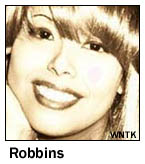 ROBERT A. "RED"
GRAHAM, former WMMM Westport CT owner, 94 (12/27/07) ROBERT A. "RED"
GRAHAM, former WMMM Westport CT owner, 94 (12/27/07)
- LeROY SCHNECK, WNAE/WRRN Warren PA founder, 88 (1/3)
- PAULINE "POLLY" ROBBINS LOYD, Upper Valley DJ,
30 (1/12)
- SUSAN VEACH CANTRELL, former WCBS editorial director, 63
(1/16)
- JOHN EDDY, former CFNB Fredericton owner, 56 (Jan.)
- GEORGE LEZOTTE, Albany newsman, 81 (1/27)
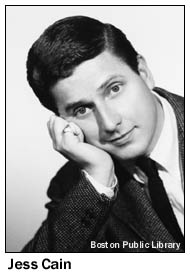 BILL BRANT, Pittsburgh
DJ, 84 (2/5) BILL BRANT, Pittsburgh
DJ, 84 (2/5)
- BILL CURRIE, KDKA-TV sports director, 85 (2/11)
- JESS CAIN, legendary WHDH morning man, 81 (2/14)
- PAT KAIN, Pennsylvania/Maryland DJ, 35 (2/21)
- MYRON COPE, voice of the Steelers, 79 (2/27)
- WILLIAM F. BUCKLEY, conservative icon, WQIV/WNCN chairman,
82 (2/27)
- RONNIE "RONNIE I" ITALIANO, NYC doo-wop jock, 67
(3/3)
- "UNCLE" FRED HORTON, upstate NY/Pennsylvania programmer,
56 (3/4)
- JOHN CALLAGHAN, WNAC-TV sports director, 81 (3/5)
- LOUIS "JOE TORRE" TORRES, Harrisburg DJ, 54 (3/14)
- JACKSON ARMSTRONG (JOHN LARSH), legendary DJ, 62 (3/22)
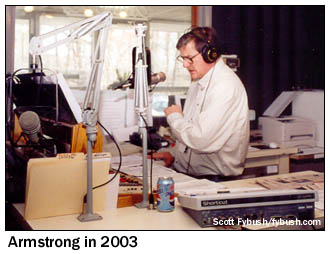
- BOB DYK, Maine newsman, 71 (3/22)
- JOHN GUARINO, New Hampshire DJ, 52 (3/24)
- CHRIS "PUNCH" ANDREWS, Toronto DJ, traffic announcer,
43 (3/30)
- DARIAN O'TOOLE (KAREN BEGIN), 40, Halifax native, former
WAXQ DJ, 40 (3/31)
- JOHN POWLEY, WOPC Altoona founder, 72 (4/6)
- MIKE CALKINS, WBNG Binghamton chief engineer, 49 (4/11)
- LESTER SMITH, WOR newsman, 90 (4/11)
- GEORGE GILBERT (SCHUMACHER), WIBG DJ, WARM Scranton PD, 76
(4/12)
- DON GILLIS, WHDH/WCVB sports, 85 (4/23)
- JAMES DAY, former NET/WNET president, 89 (4/24)
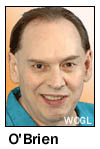 RON O'BRIEN, veteran
Philly DJ, 56 (4/27) RON O'BRIEN, veteran
Philly DJ, 56 (4/27)
- MARC (WEBBER) CHAMBERS, CHUM, CKGM DJ, 52 (5/2)
- KEEVE BERMAN, Pittsburgh, NY newsman, 71 (5/8)
- RON CHMIEL, former WUWU Buffalo owner, 72 (5/14)
- RICHARD WEAVER-BEY, former WKND Windsor CT owner, 63 (5/17)
- THOMAS FLATLEY, real estate magnate and WNHT Concord founder,
76 (5/17)
- JOHN PEPE, former WERA sports director, 74 (5/19)
- "PEGGY LYNN" (PAULINE PIERCE), WEST Easton PA DJ
1939-1970, 90 (5/21)
- EDWIN TORNBERG, New World Radio chairman, 82 (5/23)
- JONATHAN PARKER, son of VPR engineering director Rich Parker,
24 (5/28)
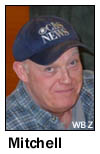 JIM MITCHELL, WBZ
weekend news anchor, 55 (6/4) JIM MITCHELL, WBZ
weekend news anchor, 55 (6/4)
- JOHN MICHAEL, CJRN/CKTB personality, 72 (6/6)
- RAUL ALARCON SR., SBS founder, 82 (6/11)
- TIM RUSSERT, Buffalo native and "Meet the Press"
host, 58 (6/13)
- BOB BRADLEY (ROBERT BOUWSMA), KYW-TV sports, kids shows,
86 (6/16)
- STEVE LOHLE, KQV anchor, 58 (6/20)
- GEORGE CARLIN, WEZE Boston DJ turned comedian, 71 (6/22)
- PAUL OLES, WCDL, WNEP sports anchor, 79 (6/28)
- ROGER ALLAN (BUMP), Boston newsman, 79 (7/1)
- PETE McNABB, former CKLY Lindsay ON owner, 80 (7/8)
- BOBBY MURCER, Yankees star turned announcer, 62 (7/12)
- THOMAS "TOMMY ISUZU" DeANGELIS, Rhode Island DJ,
50 (7/15)
- SHERMAN "JOCKO" MAXWELL, pioneering black sports
announcer, 100 (7/16)
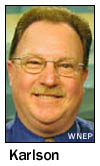 CINDY WOODS LUNNEY,
CHEZ Ottawa news anchor, 46 (7/17) CINDY WOODS LUNNEY,
CHEZ Ottawa news anchor, 46 (7/17)
- JAMES McKENNA, former WCMB/WSFM Harrisburg owner, 90 (7/23)
- TIM "BUZZ" KILPATRICK, CFGO Ottawa morning host,
41 (7/25)
- RAGAN HENRY, former WWDB, WHEC-TV owner, 74 (7/26)
- JIM THISTLE, Boston news director, educator, 66 (7/29)
- EDIE HUGGINS, first black TV reporter in Philadelphia, 72
(7/29)
- RICHARD BUCHANAN, CKPC Brantford ON owner, 76 (7/29)
- JOE "FAMM" FAMIGLIETTI, WABC City Hall reporter,
92 (7/31)
- KEVIN JEFFRIES, Long Island DJ, 59 (July)
- FLOYD "THE FOOD GUY" MISEK, upstate NY TV chef,
58 (8/1)
- ED HARVEY, WCAU talk host, WYIS owner, 92 (8/6)
- PAUL NORTON, WFIL-WPVI announcer, 79 (8/7)
- ISAAC HAYES, soul legend, WRKS DJ, 65 (8/10)
- LeROY "ROY LEE" AKINS, WWSC DJ, WFIL engineer,
66 (8/10)
- DAVID ZINKIN, NERW technical consultant, 37 (8/13)
- RON LAIDLAW, CFPL-TV news director 1953-1985, 88 (8/14)
- GUY LeBOW, NYC sports announcer, WNWK interim operator, 92
(8/14)
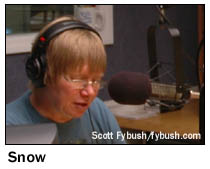 JENNY (HOWELL) SNOW,
WCJW Warsaw NY news director (8/23) JENNY (HOWELL) SNOW,
WCJW Warsaw NY news director (8/23)
- ED BUTERBAUGH, WABC, CKLW, WJR chief engineer, 65 (9/1)
- NEIL McINTYRE, New York rock PD, 68 (9/11)
- TONY BRUNTON, WCBS newsman, 76 (9/14)
- FRED "COACH" CAMPBELL, WPYX sports director, 61
(9/22)
- RON ALLEN, veteran WARM Scranton DJ, sports director, 71
(9/23)
- DICK LYNCH, New York Giants player-turned-announcer, 72 (9/24)
- RON SHOEMAKER, Binghamton TV chief engineer, 72 (9/25)
- Rev. JOHN HARDEN NORRIS, WGCB Red Lion owner, litigant, 88
(9/28)
- STAN MANSON, WHAM-TV Rochester engineer (10/7)
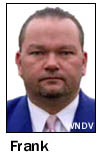 LEW FISHER, WINS
newsman, 90 (10/12) LEW FISHER, WINS
newsman, 90 (10/12)
- TIM KARLSON, WNEP Scranton sports anchor, 56 (10/16)
- TOM "MR. MAZE" MACIASZEK, WOBM jock, producer (10/18)
- LOU DORFSMAN, CBS graphics guru, 90 (10/22)
- TOMMY FRANK, WFIZ Ithaca PD/morning man, 42 (10/30)
- AUSTIN CULMER, Philadelphia talk host, 82 (10/30)
- AL SPRAGUE, NHAB president, 62 (11/3)
- KEVIN HODGE, New Jersey DJ, 47 (11/5)
- NORM MARSHALL, CHML/CHCH Hamilton anchor, 89 (11/5)
- HOWARD REIG, WGY, NBC announcer, 87 (11/10)
- BETH DIANE SKIBBE, WNPV Lansdale PA owner, 78 (11/15)
- DAVE CHARITY, WPLJ, WMXV DJ (11/22)
- ROBERT DeLANEY, Sox, Giants, Yankees announcer, WFAS DJ,
84 (11/25)
- BILL DRAKE, genius, 71 (11/29)
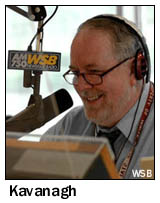 TED ROGERS JR.,
Canadian media mogul, 75 (12/1) TED ROGERS JR.,
Canadian media mogul, 75 (12/1)
- VINCE (TOSCANO) THOMAS, WSUS DJ/operations manager, 37 (12/3)
- MIKE KAVANAGH, WHYN, WSB host, financial advisor, 57 (12/6)
- JERE SULLIVAN, Philadelphia DJ, Traffic.com VP, 57 (12/8)
- STEVE YOUNG, WNEW/WAXQ PD, Seattle programmer (12/8)
- JERRY GILLMAN, WDST Woodstock NY founder, 81 (12/17)
NorthEast Radio Watch is made possible by the generous
contributions of our regular readers. If you enjoy NERW, please
click here to
learn how you can help make continued publication possible. NERW
is copyright
2008 by Scott Fybush. |

